Analysis of MHD Falkner–Skan Boundary Layer Flow and Heat Transfer Due to Symmetric Dynamic Wedge: A Numerical Study via the SCA-SQP-ANN Technique
Abstract
1. Introduction
- Provide an investigation of heat transmission by a moving symmetric wedge inside an MHD Falkner–Skan boundary layer flow (FSBLF).
- A magnetic field that effects and the velocity–ratio parameter is taken into account.
- For the surrogate solutions of FSBLF, a novel hybrid machine learning technique SCA-SQP-ANN is developed.
- Validation, training, and testing are carried out for different cases of FSBLF.
- The surrogate solutions are obtained using SCA-SQP-ANN and the results are discussed and symmetries are studied using graphical and statistical representations.
2. Mathematical Formulation
3. Design Methodology
3.1. Transformation of FS-HTM to ANN
3.2. Fitness Function
3.3. Optimization Procedure
3.4. Performance Operators
4. Empirical Simulation and Results
4.1. Problem 1: Variation in Velocity Ratio
4.2. Problem 2: Variation in Magnetic Parameters M
4.3. Performance Evaluation of SCA-SQP-ANN Algorithm
5. Conclusions
Author Contributions
Funding
Data Availability Statement
Acknowledgments
Conflicts of Interest
Abbreviations
| MIN | Minimum |
| MAX | Maximum |
| STD | Standard Deviation |
| BLF | Boundary Layer Flow |
| IQR | Inter Quartile Range |
| SCA | Sine–Cosine Algorithm |
| RMSE | Root Mean Square Error |
| MAD | Mean Absolute Deviation |
| ANN | Artificial Neural Network |
| ENSE | Error in Nash–Sutcliffe Efficiency |
| RK4 | Runge–Kutta order four technique |
| SQP | Sequential Quadratic Programming |
| FS-HTM | Falkner–Skan Heat Transfer Model |
Appendix A
References
- Falkneb, V.; Skan, S.W. LXXXV. Solutions of the boundary-layer equations. Lond. Edinb. Dublin Philos. Mag. J. Sci. 1931, 12, 865–896. [Google Scholar] [CrossRef]
- Bararnia, H.; Ghasemi, E.; Soleimani, S.; Ghotbi, A.R.; Ganji, D.D. Solution of the Falkner–Skan wedge flow by HPM–Pade method. Adv. Eng. Softw. 2012, 43, 44–52. [Google Scholar] [CrossRef]
- Howarth, L. On the solution of the laminar boundary layer equations. Proc. R. Soc. London. Ser.-Math. Phys. Sci. 1938, 164, 547–579. [Google Scholar] [CrossRef]
- Barania, H.; Haghparast, N.; Miansari, M.; Barari, A. Flow analysis for the Falkner–Sken wedge flow. Curr. Sci. 2012, 103, 169–177. [Google Scholar]
- Sayyed, S.; Singh, B.; Bano, N. Analytical solution of MHD slip flow past a constant wedge within a porous medium using DTM-Padé. Appl. Math. Comput. 2018, 321, 472–482. [Google Scholar] [CrossRef]
- Abbasbandy, S.; Hayat, T. Solution of the MHD Falkner-Skan flow by homotopy analysis method. Commun. Nonlinear Sci. Numer. Simul. 2009, 14, 3591–3598. [Google Scholar] [CrossRef]
- Abbas, Z.; Sajid, M.; Hayat, T. MHD boundary-layer flow of an upper-convected Maxwell fluid in a porous channel. Theor. Comput. Fluid Dyn. 2006, 20, 229–238. [Google Scholar] [CrossRef]
- Mukhopadhyay, S.; Layek, G.; Samad, S.A. Study of MHD boundary layer flow over a heated stretching sheet with variable viscosity. Int. J. Heat Mass Transf. 2005, 48, 4460–4466. [Google Scholar] [CrossRef]
- Khazayinejad, M.; Nourazar, S. On the effect of spatial fractional heat conduction in MHD boundary layer flow using Gr-Fe3O4–H2O hybrid nanofluid. Int. J. Therm. Sci. 2022, 172, 107265. [Google Scholar] [CrossRef]
- Anusha, T.; Mahesh, R.; Mahabaleshwar, U.S.; Laroze, D. An MHD Marangoni Boundary Layer Flow and Heat Transfer with Mass Transpiration and Radiation: An Analytical Study. Appl. Sci. 2022, 12, 7527. [Google Scholar] [CrossRef]
- Guo, Z.; Tian, X.; Wu, Z.; Yang, J.; Wang, Q. Heat transfer of granular flow around aligned tube bank in moving bed: Experimental study and theoretical prediction by thermal resistance model. Energy Convers. Manag. 2022, 257, 115435. [Google Scholar] [CrossRef]
- Shankar Goud, B.; Dharmendar Reddy, Y.; Mishra, S. Joule heating and thermal radiation impact on MHD boundary layer Nanofluid flow along an exponentially stretching surface with thermal stratified medium. Proc. Inst. Mech. Eng. Part J. Nanomater. Nanoeng. Nanosyst. 2022, 23977914221100961. [Google Scholar] [CrossRef]
- Anusha, T.; Mahabaleshwar, U.; Sheikhnejad, Y. An MHD of nanofluid flow over a porous stretching/shrinking plate with mass transpiration and Brinkman ratio. Transp. Porous Media 2022, 142, 333–352. [Google Scholar] [CrossRef]
- Elsaid, E.M.; Abdelwahed, M. MHD Boundary Layer Analysis of Hybrid Nanofluid over 3-D Sinusoidal Cylinder. Res. Sq. 2022. [Google Scholar] [CrossRef]
- Cui, W.; Li, X.; Li, X.; Si, T.; Lu, L.; Ma, T.; Wang, Q. Thermal performance of modified melamine foam/graphene/paraffin wax composite phase change materials for solar-thermal energy conversion and storage. J. Clean. Prod. 2022, 367, 133031. [Google Scholar] [CrossRef]
- Rai, P.; Mishra, U. Numerical Simulation of Boundary Layer Flow Over a Moving Plate in The Presence of Magnetic Field and Slip Conditions. J. Adv. Res. Fluid Mech. Therm. Sci. 2022, 95, 120–136. [Google Scholar]
- Yaseen, M.; Rawat, S.K.; Kumar, M. Falkner–Skan Problem for a Stretching or Shrinking Wedge With Nanoparticle Aggregation. J. Heat Transf. 2022, 144, 102501. [Google Scholar] [CrossRef]
- Garia, R.; Rawat, S.K.; Kumar, M.; Yaseen, M. Hybrid nanofluid flow over two different geometries with Cattaneo–Christov heat flux model and heat generation: A model with correlation coefficient and probable error. Chin. J. Phys. 2021, 74, 421–439. [Google Scholar] [CrossRef]
- Ali, L.; Ali, B.; Liu, X.; Ahmed, S.; Shah, M.A. Analysis of bio-convective MHD Blasius and Sakiadis flow with Cattaneo-Christov heat flux model and chemical reaction. Chin. J. Phys. 2022, 77, 1963–1975. [Google Scholar] [CrossRef]
- RamReddy, C.; Saran, H.L. Dual solutions and their stability analysis for inclined magnetohydrodynamics and Joule effects in Ti-alloy nanofluid: Flow separation. Proc. Inst. Mech. Eng. Part J. Process. Mech. Eng. 2022, 09544089221102404. [Google Scholar] [CrossRef]
- Siddique, I.; Nadeem, M.; Ali, R.; Jarad, F. Bioconvection of MHD Second-Grade Fluid Conveying Nanoparticles over an Exponentially Stretching Sheet: A Biofuel Applications. Arab. J. Sci. Eng. 2022, 47, 1–14.i. [Google Scholar] [CrossRef]
- Das, C.; Wang, G.; Payne, F. Some practical applications of magnetohydrodynamic pumping. Sens. Actuators A Phys. 2013, 201, 43–48. [Google Scholar] [CrossRef]
- Kudenatti, R.B.; Kirsur, S.R.; Achala, L.; Bujurke, N. Exact solution of two-dimensional MHD boundary layer flow over a semi-infinite flat plate. Commun. Nonlinear Sci. Numer. Simul. 2013, 18, 1151–1161. [Google Scholar] [CrossRef]
- Ishak, A.; Nazar, R.; Pop, I. MHD boundary-layer flow past a moving wedge. Magnetohydrodynamics 2009, 45, 103–110. [Google Scholar]
- Ali, B.; Hussain, S.; Naqvi, S.I.R.; Habib, D.; Abdal, S. Aligned magnetic and bioconvection effects on tangent hyperbolic nanofluid flow across faster/slower stretching wedge with activation energy: Finite element simulation. Int. J. Appl. Comput. Math. 2021, 7, 149. [Google Scholar] [CrossRef]
- Yacob, N.A.; Ishak, A.; Nazar, R.; Pop, I. Falkner–Skan problem for a static and moving wedge with prescribed surface heat flux in a nanofluid. Int. Commun. Heat Mass Transf. 2011, 38, 149–153. [Google Scholar] [CrossRef]
- Xia, C.; Zhu, Y.; Zhou, S.; Peng, H.; Feng, Y.; Zhou, W.; Shi, J.; Zhang, J. Simulation study on transient performance of a marine engine matched with high-pressure SCR system. Int. J. Engine Res. 2022, 14680874221084052. [Google Scholar] [CrossRef]
- Habib, D.; Salamat, N.; Abdal, S.H.S.; Ali, B. Numerical investigation for MHD Prandtl nanofluid transportation due to a moving wedge: Keller box approach. Int. Commun. Heat Mass Transf. 2022, 135, 106141. [Google Scholar] [CrossRef]
- Habib, D.; Salamat, N.; Ahsan, M.; Abdal, S.; Siddique, I.; Ali, B. Significance of bioconvection and mass transpiration for MHD micropolar Maxwell nanofluid flow over an extending sheet. Waves Random Complex Media 2022, 1–15. [Google Scholar] [CrossRef]
- Guo, Z.; Yang, J.; Tan, Z.; Tian, X.; Wang, Q. Numerical study on gravity-driven granular flow around tube out-wall: Effect of tube inclination on the heat transfer. Int. J. Heat Mass Transf. 2021, 174, 121296. [Google Scholar] [CrossRef]
- Marinca, V.; Herişanu, N. Application of optimal homotopy asymptotic method for solving nonlinear equations arising in heat transfer. Int. Commun. Heat Mass Transf. 2008, 35, 710–715. [Google Scholar] [CrossRef]
- Ali, B.; Hussain, S.; Nie, Y.; Rehman, A.U.; Khalid, M. Buoyancy effetcs on falknerskan flow of a Maxwell nanofluid fluid with activation energy past a wedge: Finite element approach. Chin. J. Phys. 2020, 68, 368–380. [Google Scholar] [CrossRef]
- Bejan, A. Second-law analysis in heat transfer and thermal design. In Advances in Heat Transfer; Elsevier: Amsterdam, The Netherlands, 1982; Volume 15, pp. 1–58. [Google Scholar]
- Makinde, O. Entropy analysis for MHD boundary layer flow and heat transfer over a flat plate with a convective surface boundary condition. Int. J. Exergy 2012, 10, 142–154. [Google Scholar] [CrossRef]
- Butt, A.S.; Ali, A. Entropy generation in MHD flow over a permeable stretching sheet embedded in a porous medium in the presence of viscous dissipation. Int. J. Exergy 2013, 13, 85–101. [Google Scholar] [CrossRef]
- Dehsara, M.; Dalir, N.; Nobari, M.R.H. Numerical analysis of entropy generation in nanofluid flow over a transparent plate in porous medium in presence of solar radiation, viscous dissipation and variable magnetic field. J. Mech. Sci. Technol. 2014, 28, 1819–1831. [Google Scholar] [CrossRef]
- Yazdi, M.H.; Abdullah, S.; Hashim, I.; Sopian, K. Entropy generation analysis of open parallel microchannels embedded within a permeable continuous moving surface: Application to magnetohydrodynamics (MHD). Entropy 2011, 14, 1–23. [Google Scholar] [CrossRef]
- Khan, M.F.; Sulaiman, M.; Romero, C.A.T.; Alkhathlan, A. Falkner–Skan Flow with Stream-Wise Pressure Gradient and Transfer of Mass over a Dynamic Wall. Entropy 2021, 23, 1448. [Google Scholar] [CrossRef]
- Fawad Khan, M.; Bonyah, E.; Alshammari, F.S.; Ghufran, S.M.; Sulaiman, M. Modelling and Analysis of Virotherapy of Cancer Using an Efficient Hybrid Soft Computing Procedure. Complexity 2022, 2022, 9660746. [Google Scholar] [CrossRef]
- Cui, W.; Si, T.; Li, X.; Li, X.; Lu, L.; Ma, T.; Wang, Q. Heat transfer analysis of phase change material composited with metal foam-fin hybrid structure in inclination container by numerical simulation and artificial neural network. Energy Rep. 2022, 8, 10203–10218. [Google Scholar] [CrossRef]
- Huang, K.; Su, B.; Li, T.; Ke, H.; Lin, M.; Wang, Q. Numerical simulation of the mixing behaviour of hot and cold fluids in the rectangular T-junction with/without an impeller. Appl. Therm. Eng. 2022, 204, 117942. [Google Scholar] [CrossRef]
- Khan, M.F.; Sulaiman, M.; Romero, C.A.T.; Alshammari, F.S. A Quantitative Study of Non-Linear Convective Heat Transfer Model by Novel Hybrid Heuristic Driven Neural Soft Computing. IEEE Access 2022, 10, 34133–34153. [Google Scholar] [CrossRef]
- Huang, W.; Jiang, T.; Zhang, X.; Khan, N.A.; Sulaiman, M. Analysis of beam-column designs by varying axial load with internal forces and bending rigidity using a new soft computing technique. Complexity 2021, 2021, 6639032. [Google Scholar] [CrossRef]
- Khan, M.F.; Sulaiman, M.; Tavera Romero, C.A.; Alkhathlan, A. A hybrid metaheuristic based on neurocomputing for analysis of unipolar electrohydrodynamic pump flow. Entropy 2021, 23, 1513. [Google Scholar] [CrossRef]
- Khan, N.A.; Sulaiman, M.; Kumam, P.; Aljohani, A.J. A new soft computing approach for studying the wire coating dynamics with Oldroyd 8-constant fluid. Phys. Fluids 2021, 33, 036117. [Google Scholar] [CrossRef]
- Wolpert, D.H.; Macready, W.G. No free lunch theorems for optimization. IEEE Trans. Evol. Comput. 1997, 1, 67–82. [Google Scholar] [CrossRef]
- Berrehal, H. Thermodynamics second law analysis for MHD boundary layer flow and heat transfer caused by a moving wedge. J. Mech. Sci. Technol. 2019, 33, 2949–2955. [Google Scholar] [CrossRef]
- Mirjalili, S. SCA: A sine cosine algorithm for solving optimization problems. Knowl.-Based Syst. 2016, 96, 120–133. [Google Scholar] [CrossRef]
- Mirjalili, S.M.; Mirjalili, S.Z.; Saremi, S.; Mirjalili, S. Sine cosine algorithm: Theory, literature review, and application in designing bend photonic crystal waveguides. In Nature-Inspired Optimizers; Springer: Berlin/Heidelberg, Germany, 2020; pp. 201–217. [Google Scholar]
- Zhao, M.; Wang, X.; Yu, J.; Bi, L.; Xiao, Y.; Zhang, J. Optimization of construction duration and schedule robustness based on hybrid grey wolf optimizer with sine cosine algorithm. Energies 2020, 13, 215. [Google Scholar] [CrossRef]
- Dasgupta, K.; Roy, P.K.; Mukherjee, V. Power flow based hydro-thermal-wind scheduling of hybrid power system using sine cosine algorithm. Electr. Power Syst. Res. 2020, 178, 106018. [Google Scholar] [CrossRef]
- Hekimoğlu, B. Sine-cosine algorithm-based optimization for automatic voltage regulator system. Trans. Inst. Meas. Control 2019, 41, 1761–1771. [Google Scholar] [CrossRef]
- Suid, M.; Tumari, M.M.; Ahmad, M. A modified sine cosine algorithm for improving wind plant energy production. Int. J. Electr. Eng. Comput. Sci. 2019, 16, 101–106. [Google Scholar]
- Qi, H.; Qiao, Y.B.; Ren, Y.T.; Shi, J.W.; Zhang, Z.Y.; Ruan, L.M. Application of the sequential quadratic programming algorithm for reconstructing the distribution of optical parameters based on the time-domain radiative transfer equation. Opt. Express 2016, 24, 24297–24312. [Google Scholar] [CrossRef] [PubMed]
- Johansen, T.A.; Fossen, T.I.; Berge, S.P. Constrained nonlinear control allocation with singularity avoidance using sequential quadratic programming. IEEE Trans. Control Syst. Technol. 2004, 12, 211–216. [Google Scholar] [CrossRef]
- Attia, A.F.; El Sehiemy, R.A.; Hasanien, H.M. Optimal power flow solution in power systems using a novel Sine-Cosine algorithm. Int. J. Electr. Power Energy Syst. 2018, 99, 331–343. [Google Scholar] [CrossRef]
- Sindhu, R.; Ngadiran, R.; Yacob, Y.M.; Zahri, N.A.H.; Hariharan, M. Sine–cosine algorithm for feature selection with elitism strategy and new updating mechanism. Neural Comput. Appl. 2017, 28, 2947–2958. [Google Scholar] [CrossRef]
- Mehmood, A.; Zameer, A.; Ling, S.H.; ur Rehman, A.; Raja, M.A.Z. Integrated computational intelligent paradigm for nonlinear electric circuit models using neural networks, genetic algorithms and sequential quadratic programming. Neural Comput. Appl. 2020, 32, 10337–10357. [Google Scholar] [CrossRef]
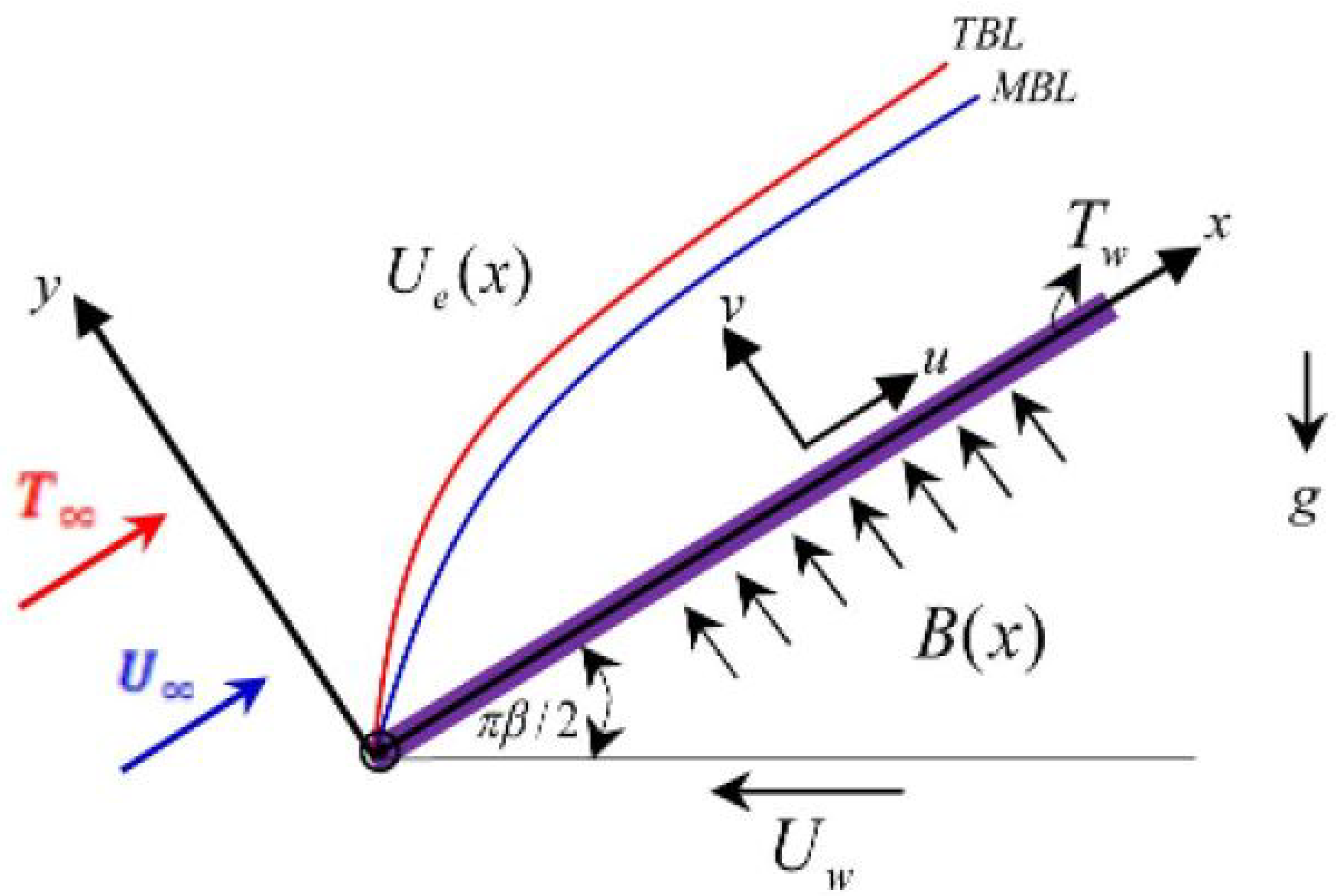

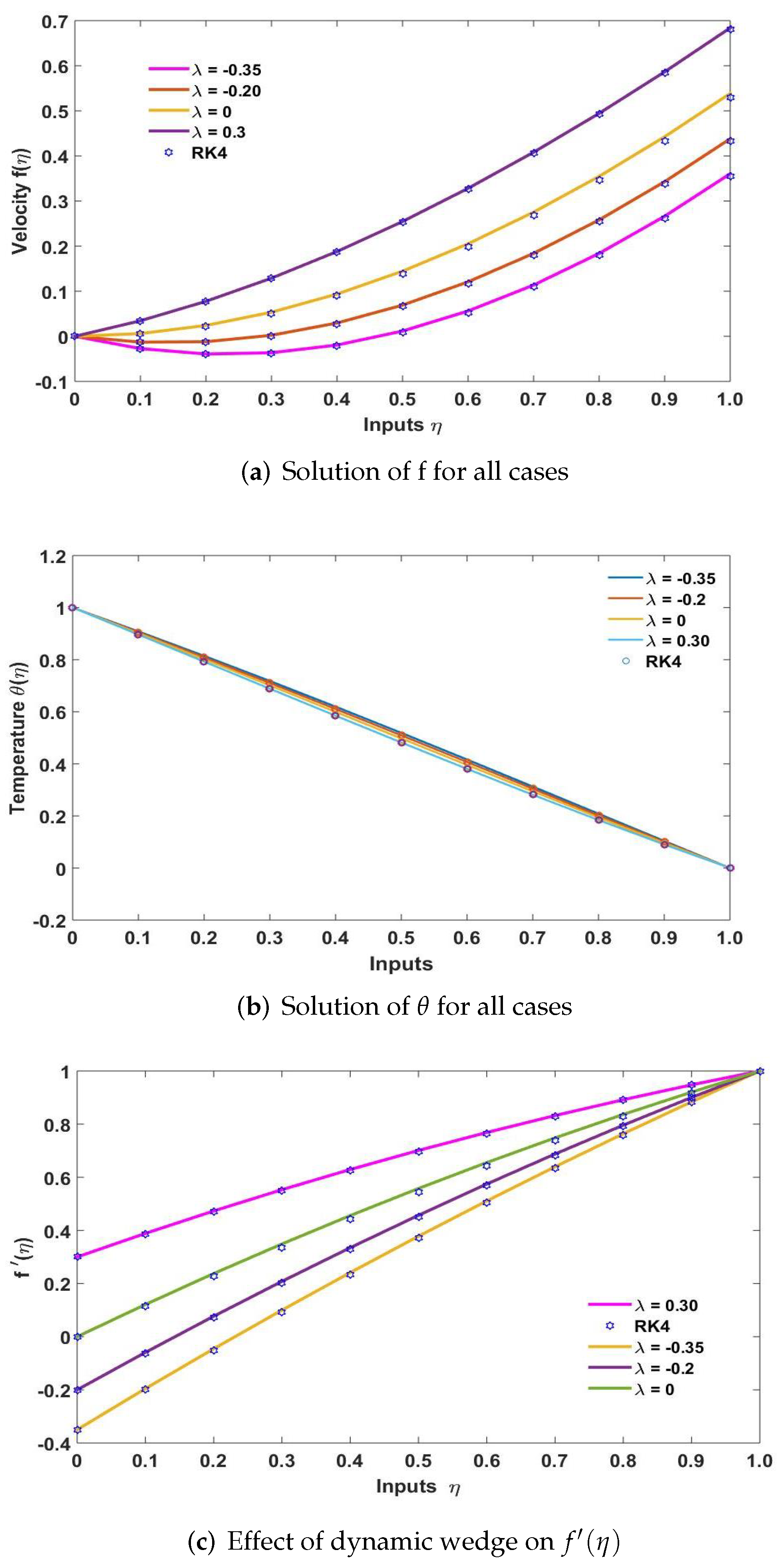
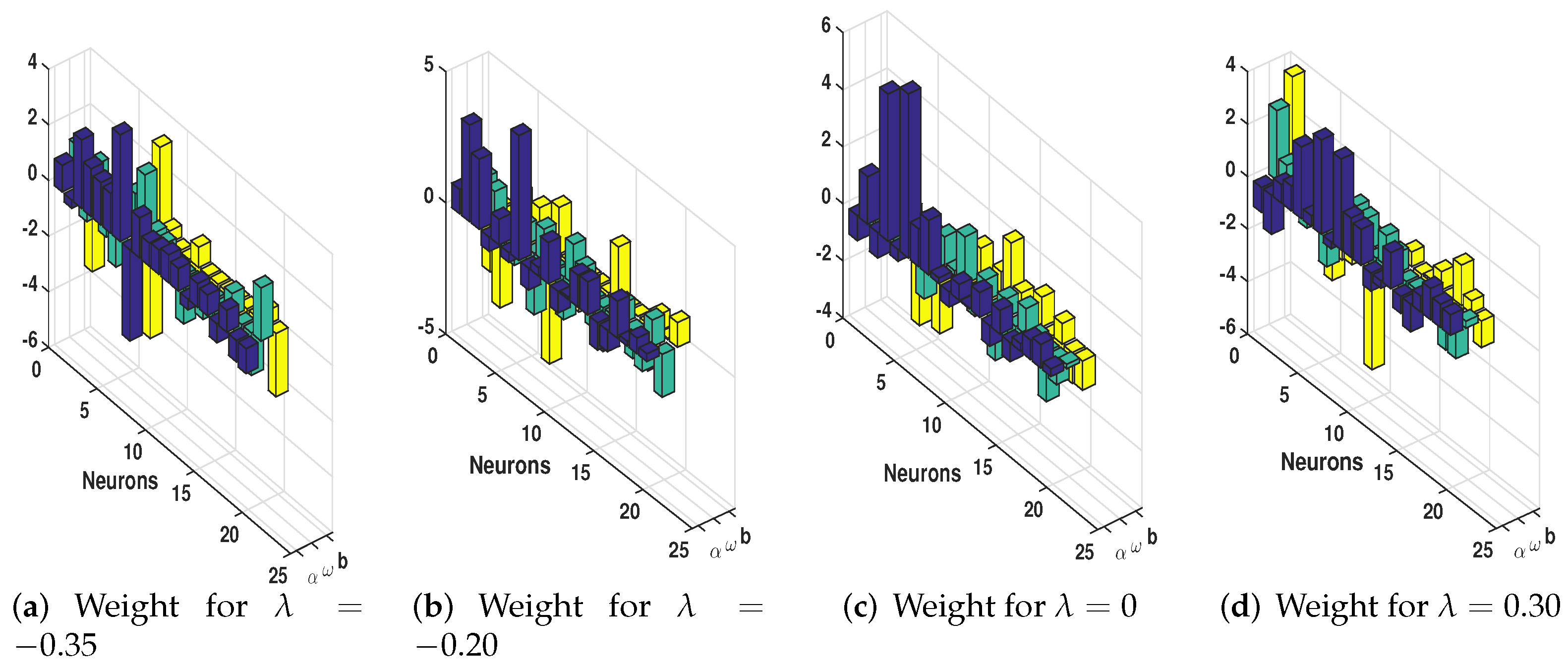

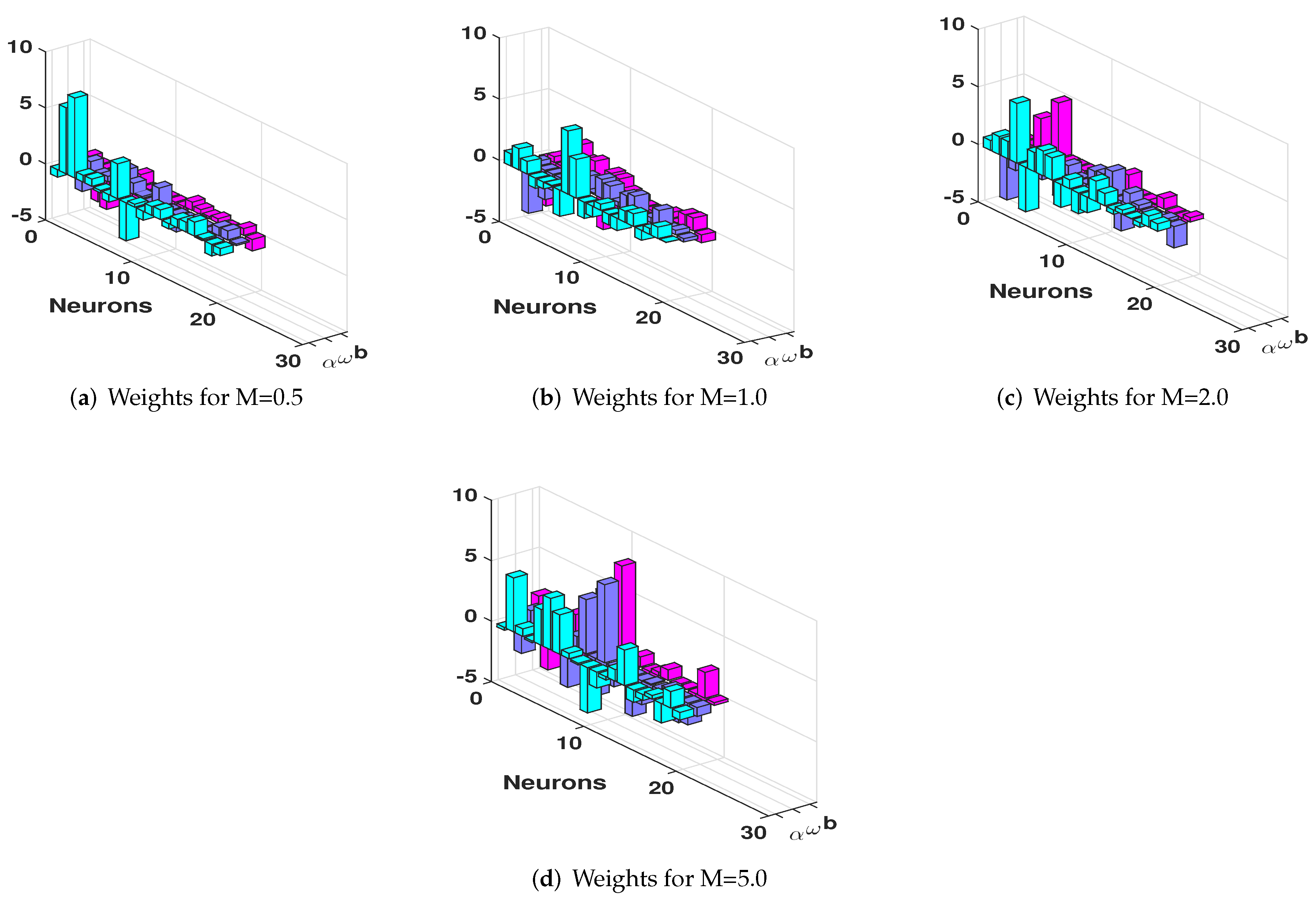





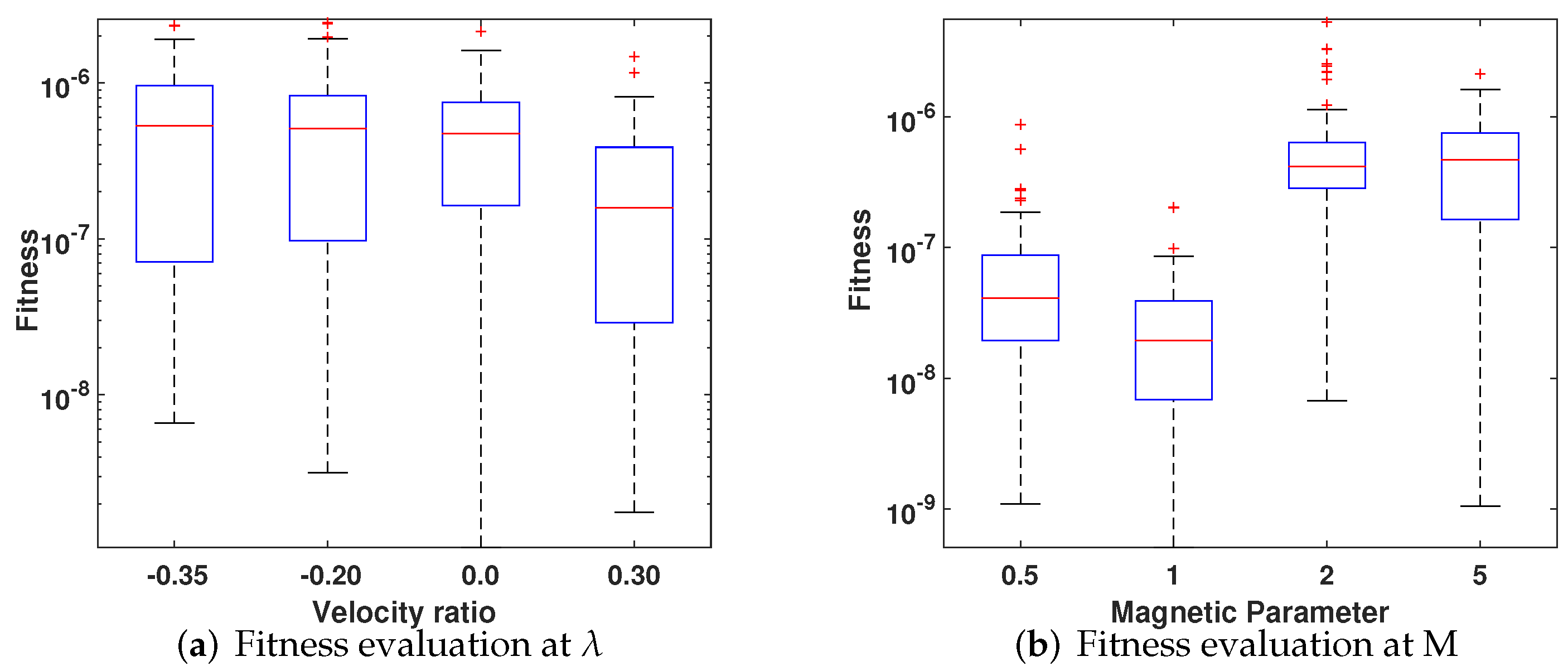
| Inputs () | ||||||||
|---|---|---|---|---|---|---|---|---|
| SCA-SQP-ANN | RK4 | SCA-SQP-ANN | RK4 | SCA-SQP-ANN | RK4 | SCA-SQP-ANN | RK4 | |
| 0 | −4.25 × 10 | 0 | 44.57 × 10 | 0 | −8.36 × 10 | 0 | −1.10 × 10 | 0 |
| 0.1 | −0.027234253 | −0.027406741 | −0.012918254 | −0.013067322 | 0.006093418 | 0.005779 | 0.034470252 | 0.034387 |
| 0.2 | −0.039237642 | −0.039865281 | −0.011986216 | −0.012530916 | 0.024070482 | 0.022916 | 0.077596841 | 0.077297 |
| 0.3 | −0.036469018 | −0.037728854 | 0.002311234 | 0.001218263 | 0.053437643 | 0.051103 | 0.128949912 | 0.128355 |
| 0.4 | −0.019367556 | −0.021349023 | 0.029504524 | 0.02778831 | 0.093717171 | 0.090026 | 0.188104596 | 0.187176 |
| 0.5 | 0.011637567 | 0.008920205 | 0.069132158 | 0.066783587 | 0.144437247 | 0.139357 | 0.254640693 | 0.253379 |
| 0.6 | 0.05612302 | 0.052719106 | 0.120738429 | 0.117802793 | 0.205131312 | 0.198752 | 0.328143967 | 0.326577 |
| 0.7 | 0.113668903 | 0.109679734 | 0.183871715 | 0.180437829 | 0.275338347 | 0.267851 | 0.408207906 | 0.406385 |
| 0.8 | 0.183857695 | 0.179424294 | 0.258083921 | 0.254273526 | 0.354603945 | 0.346276 | 0.494435741 | 0.492423 |
| 0.9 | 0.266273938 | 0.261564413 | 0.342931191 | 0.338888237 | 0.442481908 | 0.433633 | 0.58644262 | 0.584314 |
| 1 | 0.36050402 | 0.355701332 | 0.437975323 | 0.433855215 | 0.538536121 | 0.529513 | 0.68385782 | 0.681691 |
| Inputs | ||||||||
|---|---|---|---|---|---|---|---|---|
| SCA-SQP-ANN | RK4 | SCA-SQP-ANN | RK4 | SCA-SQP-ANN | RK4 | SCA-SQP-ANN | RK4 | |
| 0 | 1.000001812 | 1 | 1.000000225 | 1 | 0.999998531 | 1 | 0.999999699 | 1 |
| 0.1 | 0.90860409 | 0.908562619 | 0.905521484 | 0.905495225 | 0.901677008 | 0.896707476 | 0.896544003 | 0.896546217 |
| 0.2 | 0.814713872 | 0.814715447 | 0.809044665 | 0.809057377 | 0.801996101 | 0.793464936 | 0.792602273 | 0.792627911 |
| 0.3 | 0.718380152 | 0.718473299 | 0.71070495 | 0.710793539 | 0.701198314 | 0.690399411 | 0.688569923 | 0.688629628 |
| 0.4 | 0.619744077 | 0.619946189 | 0.6107261 | 0.610902398 | 0.599605459 | 0.58771895 | 0.584897631 | 0.584992563 |
| 0.5 | 0.519044884 | 0.519345517 | 0.50942261 | 0.509676403 | 0.497615933 | 0.485708088 | 0.482082831 | 0.482205966 |
| 0.6 | 0.41662293 | 0.416988316 | 0.4071987 | 0.407501426 | 0.395698386 | 0.384721417 | 0.38065858 | 0.380796345 |
| 0.7 | 0.312920295 | 0.313298717 | 0.304544232 | 0.30485335 | 0.294382593 | 0.285174821 | 0.281180368 | 0.281314622 |
| 0.8 | 0.208478661 | 0.208805575 | 0.202027387 | 0.202290918 | 0.19424794 | 0.187534237 | 0.184211476 | 0.184321615 |
| 0.9 | 0.103933 | 0.10413538 | 0.100283613 | 0.100444376 | 0.095909395 | 0.092301841 | 0.09030746 | 0.090372365 |
| 1 | −1.30 × 10 | 0 | 1.51 × 10 | 0 | 3.57 × 10 | 0 | 3.74 × 10 | 0 |
| Operator | STD | MEAN | MIN | STD | MEAN | MIN | STD | MEAN | MIN |
|---|---|---|---|---|---|---|---|---|---|
| MAD | 5.29 | 2.56 | 2.54 | 4.59 | 2.21 | 2.19 | 3.74 | 4.79 | 4.78 |
| RMSE | 5.32 | 3.10 | 3.08 | 4.71 | 2.67 | 2.65 | 3.80 | 5.82 | 5.81 |
| ENSE | 1.98 | 4.35 | 4.27 | 1.15 | 2.42 | 2.37 | 1.43 | 8.29 | 8.23 |
| FITNESS | 2.10 | 2.10 | 5.04 | 2.68 | 9.02 | 8.23 | 1.67 | 9.16 | 5.81 |
Publisher’s Note: MDPI stays neutral with regard to jurisdictional claims in published maps and institutional affiliations. |
© 2022 by the authors. Licensee MDPI, Basel, Switzerland. This article is an open access article distributed under the terms and conditions of the Creative Commons Attribution (CC BY) license (https://creativecommons.org/licenses/by/4.0/).
Share and Cite
Nonlaopon, K.; Khan, M.F.; Sulaiman, M.; Alshammari, F.S.; Laouini, G. Analysis of MHD Falkner–Skan Boundary Layer Flow and Heat Transfer Due to Symmetric Dynamic Wedge: A Numerical Study via the SCA-SQP-ANN Technique. Symmetry 2022, 14, 2180. https://doi.org/10.3390/sym14102180
Nonlaopon K, Khan MF, Sulaiman M, Alshammari FS, Laouini G. Analysis of MHD Falkner–Skan Boundary Layer Flow and Heat Transfer Due to Symmetric Dynamic Wedge: A Numerical Study via the SCA-SQP-ANN Technique. Symmetry. 2022; 14(10):2180. https://doi.org/10.3390/sym14102180
Chicago/Turabian StyleNonlaopon, Kamsing, Muhammad Fawad Khan, Muhammad Sulaiman, Fahad Sameer Alshammari, and Ghaylen Laouini. 2022. "Analysis of MHD Falkner–Skan Boundary Layer Flow and Heat Transfer Due to Symmetric Dynamic Wedge: A Numerical Study via the SCA-SQP-ANN Technique" Symmetry 14, no. 10: 2180. https://doi.org/10.3390/sym14102180
APA StyleNonlaopon, K., Khan, M. F., Sulaiman, M., Alshammari, F. S., & Laouini, G. (2022). Analysis of MHD Falkner–Skan Boundary Layer Flow and Heat Transfer Due to Symmetric Dynamic Wedge: A Numerical Study via the SCA-SQP-ANN Technique. Symmetry, 14(10), 2180. https://doi.org/10.3390/sym14102180








